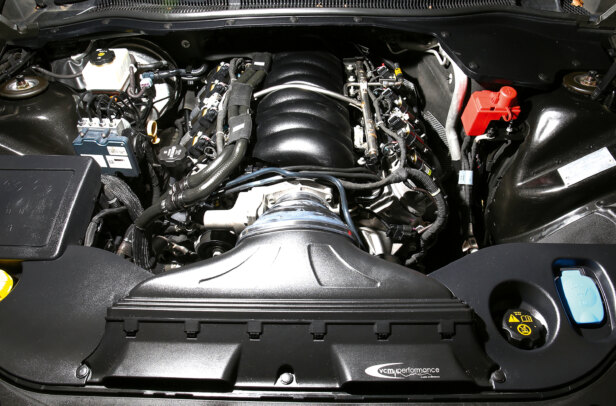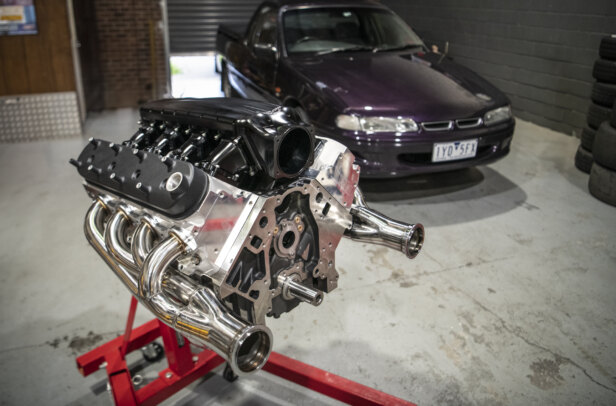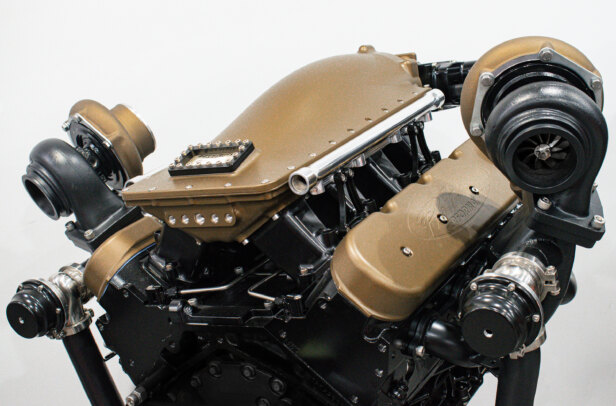AUSTRALIANS and LS engines go together like a cold froffy and a game of footy. We’ve loved them since their debut Down Under in 1999, and they’ve been used for just about everything – street cars, burnouts, drag racing, drifting, boat engines (literally), tow rigs, 4x4s, the list just goes on.
Australian YouTuber Boost Gumps recently uploaded a video (see above) dissecting all the LS engines we’ve had delivered locally in Australia in Holdens and HSVs. As mentioned, the LS debuted here in ’99 with the LS1 in the Commodore VT II SS, and we copped a fair few versions from the mighty Chevy V8 series before the last locally-built Commodores and HSVs rolled off the line in late 2017.
We’ll briefly break down the differences between the Gen III LS1, Gen IV LS2, LS3 and the HSV-exclusive supercharged LSA, with a few mentions of some limited LS mills.
Again, we stress that this quick guide is only relevant to locally-sold LS engines in Holden products. The US got a bunch of different variants, including smaller capacities, iron blocks and all that jazz, so if you want to know more about those you can read up on them with this link here.
GEN III LS1 (VT-VZ)
THE LS1 was fitted to both the Series II VT Commodores and V8 range (Calais, Statesman etc) along with HSV’s Series II VT range, replacing the ageing and locally-built 5.0-litre Holden V8. All LS1s were 5.7-litre, alloy-block engines and were rated at 295hp (220kW) in the VT II SS. The LS1 had cathedral-port heads and was used to power the VX, VY and early VZ SS Commodores, where it made a peak of 335hp (250kW). HSV used the LS1 through its VX and VY range, and from VX onwards the company did tickle some of them up a bit.
GEN IV & LS2 (VZ)
IN 2004, both the VZ Commodore and HSV range debuted and started the transition period from the Gen III LS1 to the Gen IV LS2 and Gen IV 6.0-litre LS variants. The Gen IV received a stronger alloy block with a four-inch bore, better rods and also new heads (depending on the variant). Things get complicated in this section, so bear with us while we explain it briefly.
The VZ SS Commodore and V8 range stayed with the LS1 until 2006. The first HSV Z Series was fitted with ‘early-spec’ LS2s right from the start in 2004, which still used cathedral-port heads. The VZ also marked the end of cable-driven throttles, migrating to drive-by-wire set-ups.
In 2006, two variants of the Gen IV 6.0-litre made their way into Holden’s SS Commodores and V8 range. Known as the L76 and L98, both had the new and improved rectangle-ported heads. The key difference between the two is the displacement on demand (DOD) hardware, which the L76 has and the L98 does not. DOD uses specific lifters and other trickery to shut down four cylinders, but the VZs didn’t run the software needed to activate it. The L76 produced 348hp (260kW) in the VZ V8 range. As for HSV, they just used the straight-up LS2 and quoted its Z Series models at 398hp (297kW).
Holden used the DOD-equipped L76 for most of 2006 for the SS and V8 range, but the very last of Holden’s VZs ended up with the L98, in particular the SS Thunder utes. This is because while the VE sedan debuted in 2006, the VE ute didn’t arrive until 2007.
It is also worth noting here that the Monaro range never received a Gen IV LS. The last of the VZ-generation Monaros still retained the LS1, even though the US-exported Pontiac GTO scored the Gen IV LS2 later in life. HSV also fitted the Gen IV LS2 to its GTO coupe as part of the Z Series II range.
Gen IV LS2 & LS3 (VE & VF)
FOR Holden, the VE and Series I VF V8 models continued with variants of the Gen IV 6.0-litre LS. All V8 VEs used the L98 version until 2008, when the L76 was reintroduced to the VE range in automatic models along with active fuel management (AFM). Holden’s AFM made use of the DOD in the L76, so these automatic models had the software needed to shut down the four cylinders for better economy. Manual models retained the L98.
For HSV, its early E Series range kept the LS2 until mid 2008, when it was replaced by the new and improved 6.2-litre LS3 that was used for all of its following E Series and the early HSV VF models. Like the LS2, the LS3 had no DOD hardware.
In 2010, both the L98 and L76 were replaced by the L77 in Holden’s VE V8 range. The L77 was still a 6.0-litre Gen IV LS, the biggest difference being that it was flex-fuel compatible with E85. The L77 was used in both automatic and manual cars and had the DOD lifters, but, like the earlier VEs, buyers could only opt for the AFM software in the automatic models.
The VE was replaced by the VF in 2013, and the first generation VF V8 models retained the L77. In 2015, the VF Series II retired the 6.0-litre L77 in favour of the LS3 that had previously only been available in HSVs. In the VF V8 range, the LS3 made 408hp (304Kw), had no provision for DOD or AFM, and stayed with the VF until production ended late in 2017.
LSA (HSV VF I & II)
THE first-generation VF HSV (GEN-F) range launched in 2013 and still featured the LS3 for the standard Clubsport, Senator, Maloo and Grange models. The exception to this was the GTS sedan and limited-run GTS Maloo. Both were fitted with the supercharged 6.2-litre LSA. The LSA pumped out 576hp (430kW) and was available in both automatic and manual models.
The GEN-F Series II range debuted in 2015, and HSV introduced the LSA to the entire fleet (Senator, Maloo, Clubsport R8 and Clubsport R8 tourer) with a slightly detuned 536hp (400kW), as well as the GTSR sedan and Maloo, which debuted in 2017 with a 583hp (435kW) version of the LSA.
Special Editions (LS1, LS7 & LS9)
WHILE all the cars and engine combinations mentioned above are the most common, HSV did do limited runs of special edition cars that featured LS engines. The first is the 402hp (300kW) version of the LS1, known as the C4B. It was built by Callaway in the US and was used in the VX and VY GTS 300s. It featured ported heads, a beefier cam and other basics, but still retained the 5.7-litre capacity.
The HSV W427 was unveiled in 2008, featuring the stonking 502hp (375kW), 7.0-litre LS7 from the Z06 Corvette. It featured forged internals, a Siamese-bore block, dry-sump system and pressed-in cylinder sleeves for extra strength.
And last but certainly not least is the HSV GTSR W1. The W1 was the limited-edition version of the 2017 VF GTSR, because, unlike the normal GTSR which ran the LSA, it had the balls-to-the-wall supercharged LS9 fitted. The LS9 was developed for the ZR1 Corvette and also featured a dry-sump oiling system along with a 2.3-litre Eaton blower. It made 635hp (474kW), making the W1 the most powerful production car ever built in Australia.



Comments